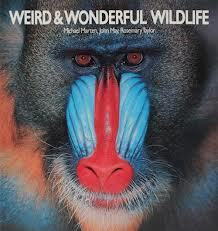
Last Chance to See
Book Description
Dive into a world on the brink of extinction, where the last of Earth's most extraordinary creatures face their final moments. Acclaimed author Douglas Adams embarks on a breathtaking journey across continents, capturing both the wonder and vulnerability of wildlife in peril. As he uncovers the stories behind iconic species teetering on the edge, a compelling mix of humor and urgency challenges our perceptions of nature and responsibility. This poignant exploration isn't just an adventure; it’s a clarion call for awareness and action. Will the echoes of these remarkable lives resonate long after they fade away?
Quick Book Summary
"Last Chance to See" follows author Douglas Adams and zoologist Mark Carwardine on an extraordinary journey to witness some of the world’s most endangered animals. Blending wit, humor, and genuine concern, Adams offers candid accounts of encounters with animals such as the Komodo dragon, kakapo parrot, and baiji dolphin—all teetering on the brink of extinction. Through witty anecdotes and vivid descriptions, Adams explores not just the animals themselves, but the environmental, political, and social factors contributing to their decline. The book is both an entertaining travelogue and a call to action, urging readers to recognize their role in conserving biodiversity before it’s too late. Adams’s irreverent humor and sharp observations turn a sobering subject into an engaging narrative that balances laughter with urgency.
Summary of Key Ideas
Table of Contents
Encounters with Endangered Species
Adams and Carwardine set out on a global quest to observe some of the planet’s rarest species in their natural habitats. Their expeditions lead them from the rainforests of Madagascar and the islands of New Zealand to the rivers of China and jungles of Indonesia. Throughout, Adams chronicles each journey with trademark humor, vividly describing both awe-inspiring landscapes and the logistical mishaps endemic to adventure travel. These firsthand encounters anchor the narrative, offering intimate glimpses of animals rarely seen and locales often forgotten in mainstream environmental discourse.
The Human Impact on Wildlife
At the center of each story are the animals themselves: the nearly flightless kakapo parrot, the Komodo dragon, the baiji Yangtze River dolphin, and others. Adams highlights the unique characteristics, behaviors, and histories of these creatures, weaving in scientific detail with accessible, engaging prose. He humanizes the animals and the conservationists striving to save them, making their struggles relatable. The book emphasizes each species’ singularity—how their loss would mean not just the disappearance of an animal, but of an entire world with its own history and connections.
Conservation with Humor and Hope
Through sharp insight and wit, Adams critiques the ways humans have altered, exploited, and degraded environments. He reveals how deforestation, poaching, pollution, and indifference have pushed species to the edge, sometimes unwittingly. This human impact is presented not in dry statistics, but through stories and conversations with local people, scientists, and conservation workers. The complexities of conservation—political obstacles, cultural misunderstandings, and economic challenges—are confronted with candor and humor, never losing sight of the absurdity and gravity of it all.
Biodiversity and Its Fragility
Despite the grim subject matter, Adams suffuses the narrative with hope and a plea for responsibility. He highlights successes in captive breeding, the tireless dedication of conservationists, and the beauty of biodiversity. The narrative invites readers to marvel at the wonders of evolution and the interconnectedness of life, even as it underscores the real possibility of irrevocable loss. Adams’s irreverent style does not undercut the seriousness but rather invites broader engagement with the subject.
The Responsibility to Protect Nature
Ultimately, "Last Chance to See" is both a celebration of natural diversity and a cautionary tale. By combining travel writing, scientific curiosity, and philosophical reflection, Adams prompts us to recognize our role in protecting the fragile tapestry of life. The book leaves readers with a sense of urgency and wonder—a recognition that the fate of these creatures rests as much with human compassion and collective action as it does with nature’s resilience.
Download This Summary
Get a free PDF of this summary instantly — no email required.





